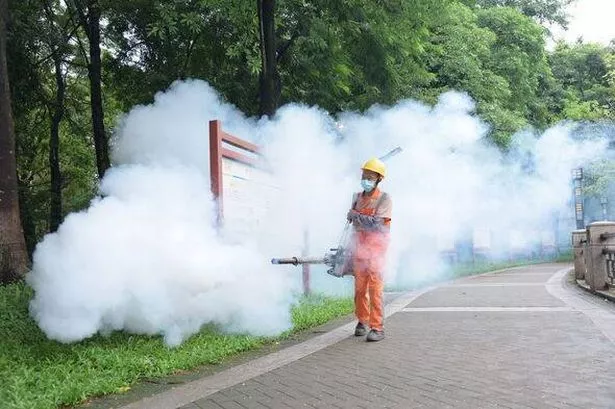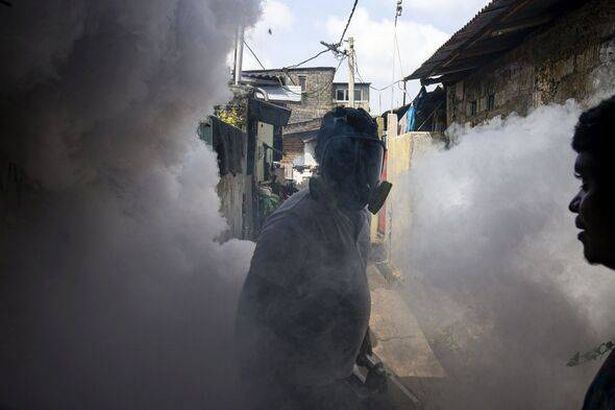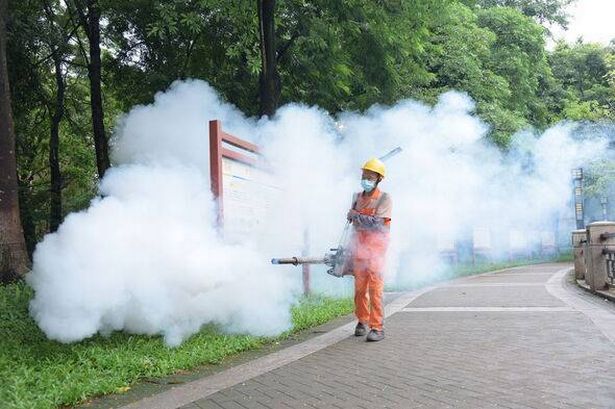The chikungunya virus, which is spread by mosquitoes, is rarely fatal but has seen a surge in cases in China after an imported case was detected in Foshan city earlier this month
02:35, 06 Aug 2025Updated 02:35, 06 Aug 2025

A mosquito-borne virus outbreak has infected more than 7,000 people across at least 13 cities in China, prompting authorities to introduce strict precautions reminiscent of the COVID pandemic – even though the virus cannot be transmitted from person to person.
The chikungunya virus, which is only spread through the bite of an infected mosquito and is rarely fatal, has swept rapidly through more than a dozen cities in southern Guangdong province, just north of Hong Kong. Nearly 3,000 cases were reported in the past week alone, according to the BBC.
Chikungunya is typically uncommon in China, but infections soared after an imported case was detected in Foshan city on July 8, which has since become the worst-affected area, according to the New York Times. The news comes since reports that the disease could arrive in the UK.
In response, authorities in Guangdong have implemented measures similar to those deployed during the COVID pandemic. All infected patients are required to remain in hospital isolation under a mosquito net until they test negative for the virus, according to a translation of Chinese news outlet NF News.
Officials are also carrying out door-to-door inspections to ensure stagnant water – where mosquitoes breed – is eliminated. Those who fail to comply can be fined or face criminal charges for “obstructing the prevention of infectious diseases,” according to a government flyer translated by the Times, reports the Express.
Other measures include the introduction of giant “elephant mosquitoes”, whose larvae consume virus-carrying mosquitoes, releasing mosquito-eating fish into local ponds, spraying pesticides and using drones to identify mosquito breeding sites, according to The Times.

What is chikungunya?
Chikungunya is a mosquito-borne virus that typically causes symptoms such as headache, muscle pain, nausea, fatigue, rash and swollen joints. While most symptoms resolve within two weeks, the “debilitating” joint pain can persist for months or even years, says the World Health Organisation.
This joint pain is considered the hallmark symptom of chikungunya. Without it, infected individuals may be misdiagnosed with dengue or Zika, making it challenging to determine how many people actually have chikungunya.
First identified in southern Tanzania in the 1950s, its name derives from a Kimakonde word meaning “that which bends up,” describing the contorted posture caused by severe joint pain.
How does it spread?
Chikungunya can only be transmitted via a mosquito bite. However, individuals with the virus can pass it back to non-infected mosquitoes if bitten, allowing those insects to then infect others.
The virus is not contagious between humans.
Is there a vaccine?
There are two vaccines approved for use in the United States: IXCHIQ (for those 18 and older) and VIMKUNYA (for those 12 and older). The CDC recommends vaccination only for travellers heading to areas with active chikungunya outbreaks.
Where is chikungunya most common?
The Centers for Disease Control and Prevention have issued a warning to U.S. travellers visiting Brazil, Colombia, India, Mexico, Nigeria, Pakistan, Thailand and the Philippines, stating they are at an increased risk. A Level 2 travel alert has also been issued for Foshan city, with the CDC recommending that travellers get vaccinated before their visit.
Preventive measures include using insect repellent and wearing long-sleeved shirts and trousers. Pregnant women are advised against travelling to affected regions.
What’s next?
Authorities are bracing for more infections after Hong Kong reported its first case – a 12 year old lad – on Monday.









